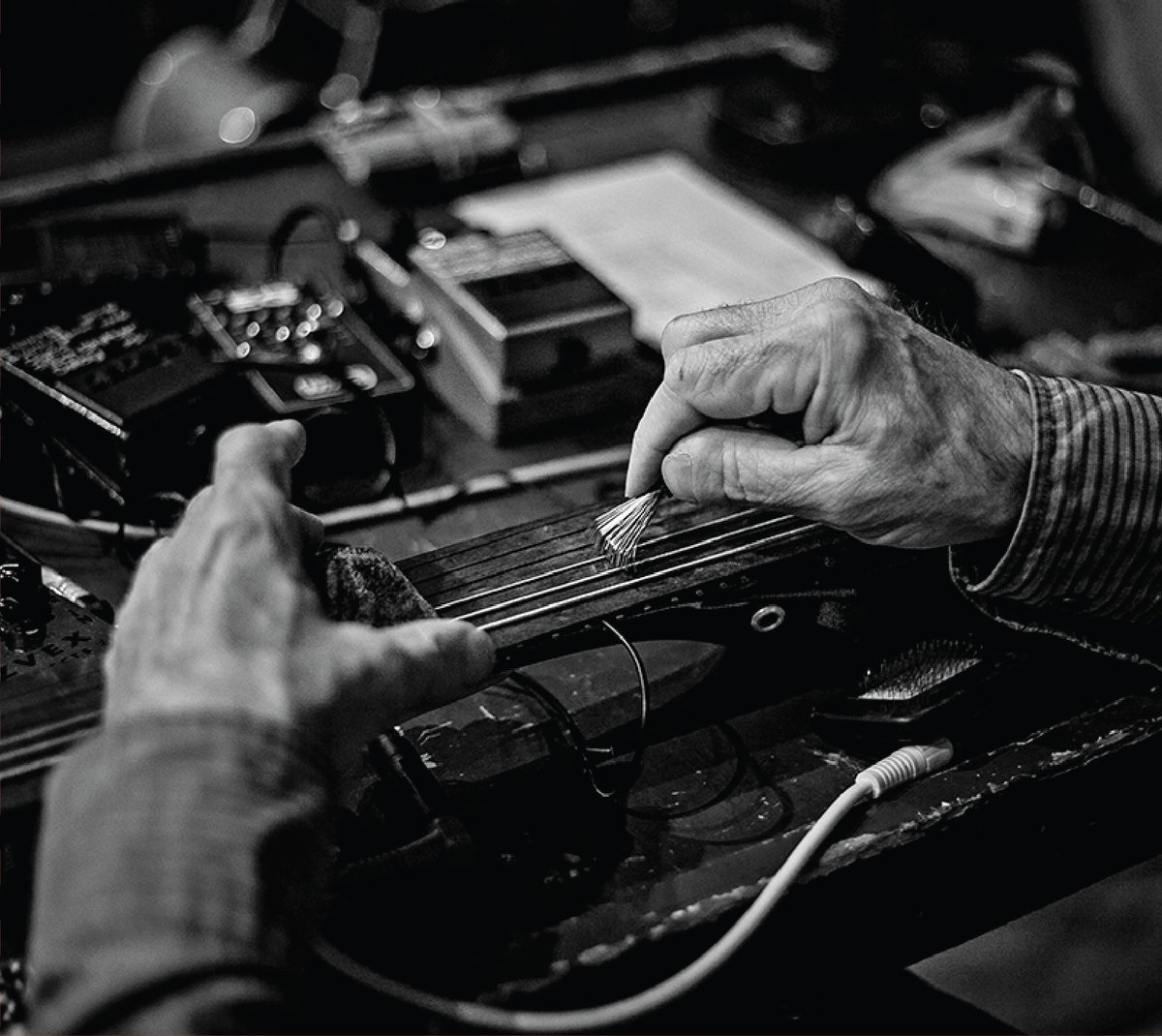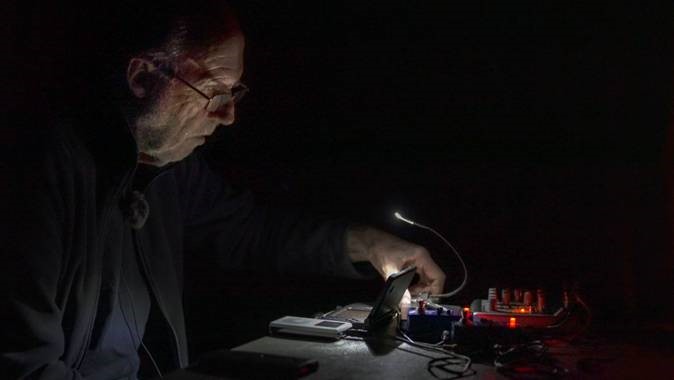Keith Rowe
area: Sound Art
Key Facts
nationality
Great Britain/Francearea
Sound Artresidence
Clissonrecommending institution
TONSPUR Kunstverein Wientime period
November 2018 - November 2018In London, in the fall of 1965, a group of four musicians, dissatisfied with the confines they had encountered in the British jazz scene, came togehter with a highly thought-out agenda to revolutionarize the way music was created: no repertoire no solos, no rhythms, no melodies, no fear of silence, 100% improvised. This rejected rules firmly in place then, as now, among even the most forward-looking in musicians.
Keith Rowe was one of the founding members of the collective. They called themselves AMM and soon added the composer Cornelius Cardew, an associate of John Cage and Karlheinz Stockhausen, who was seeking to escape what he thought were equivalent strictures in the avant-garde classical world. As a quintet, AMM created unlike anything else being done at the time and, being immersed in the London scene of the mid-60s in which musical boundaries were amorphous, found themselves on the one hand sharing bills with nascent bands like Pink Floyd, The Who, and Cream while on the other working alongside with Yoko Ono and Christian Wolff.
Rowe, a guitarist trained as a painter, adapted to his guitar the lessons he'd learned in the visual arts, placing it flat on a table or the ground as Jackson Pollock had done with his canvases, using it as a sound source to be approached with all manner of implements, opening up a vast new territory of exploration, one which would be enormously influential in rock and contemporary classical, as well as the field of free improvisation.
Over 12 years in the making and via exhaustive research and exclusive interviews Brian Olewnick has traced Rowe's life from childhood through the present, with focused on London's mid-60s experimental music scene, the political unrest of the late 60s, the radical politics of the early 70s, the ongoing saga of AMM through the 90s and the accompanying advance of creative music over that time period, centered around Rowe's participation in those events and his major contributions to the contemporary avant-garde environment. Throught the many ups and downs of AMM and beyond, Rowe has become an éminence grise to generations of musicians and is still today continuing to push the boundaries of what is possible in the world of sound.

